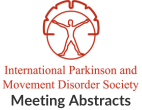Special features of parkinsonism with congenital anomalies of cerebral vessels
Objective: To study the features of the flow of parkinsonism with congenital anomalies of cerebral vessels. Background: Analysis of the study of neurological status, data…Evaluation of nigral neuronal apoptosis during postnatal development and adulthood of mice strains with differential sensitivity to MPTP
Objective: Compare nigral neurons in C57BL/6J, CD-1 and their F1 crossbreds with respect to developmental apoptosis in the nigra during postnatal and to assess MPTP-induced…Gender-dependent improvement in the survival of Parkinson’s disease patients in Finland
Objective: To longitudinally investigate the overall survival (OS) of a large cohort of Parkinson's disease (PD) patients. Background: While there is evidence of increasing incidence,…Laboratory Performance of the DopaFuse® Delivery System
Objective: SynAgile has developed the DopaFuse Delivery System to noninvasively and continuously administer levodopa/carbidopa (LD/CD) into the mouths of patients with Parkinson’s Disease (PD). The…A Human Factors Study of the DopaFuse® Delivery System
Objective: SynAgile has developed the DopaFuse Delivery System to noninvasively and continuously administer oral LD/CD into the mouths of patients with PD. The System is…Increasing chances of detecting a neuroprotective signal in PhI/II PD clinical trials?
Objective: Design an early CT program to detect a neuroprotective signal in PD. Background: Attempts to develop PD modifying therapies have been largely disappointing so…5 cases Static Encephalopathy of childhood with NeuroDegeneration in Adulthood (OMIM 300894) in children
Objective: 5 russian female patients aged 3 to 6 years with different mutations of the WDR45 gene were examined. Background: To study the clinical picture…Expanding the Phenotype of KCNA2 Mutation: Tics and Stereotypies
Objective: To report a case of KCNA2 mutation variant with tics. Background: Mutations in the KCNA2 gene impact the function of a voltage-gated potassium channel…Development of a biomarker for Parkinson’s disease by measuring alpha-synuclein oligomers in cerebrospinal fluid with ultrasonication-induced amyloid fibril formation
Objective: To establish a new technique quantifying misfolded alpha-synuclein (αSyn) oligomers in the CSF and to investigate their clinical - pathological significances in Parkinson’s disease…Is early onset ataxia phenotypically discernible from developmental disorders with impaired coordination?
Objective: To investigate: 1. the diagnostic accuracy of phenotypic Early Onset Ataxia (EOA) recognition among other pediatric disorders with impaired coordination (developmental coordination disorder (DCD)…
- « Previous Page
- 1
- …
- 4
- 5
- 6
- 7
- 8
- 9
- Next Page »
